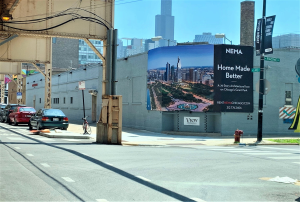Kiosk Ad Strategies Powered by Neuroscience
Digital out-of-home formats like kiosk ads are evolving rapidly. But as screens become more ubiquitous, attention spans are shrinking—and marketers are under pressure to deliver messages that not only grab attention but also stick. That’s where neuromarketing comes in.
By tapping into how consumers process emotional and sensory cues, neuromarketing helps transform an ordinary kiosk ad into a brain-friendly brand experience. In this blog, we explore how marketing professionals can apply neuromarketing principles to kiosk advertising to drive stronger engagement, brand recall, and behavior change.
Kiosk Ads and the Brain: Why Emotions Drive Decisions
Let’s start with a fundamental truth: humans are emotional decision-makers. According to Harvard Business School professor Gerald Zaltman, 95% of purchasing decisions happen in the subconscious mind. That means logical arguments alone won’t drive conversions—your kiosk ad must resonate emotionally.
Neuromarketing, the fusion of neuroscience and marketing, gives us tools to understand how color, imagery, language, and motion can be engineered to evoke emotional responses. When applied to kiosk advertising, this approach enhances the way audiences interact with your message, creating stronger, more memorable brand touchpoints.
Kiosk Ad Design: Emotional Triggers That Work
So how do you apply neuromarketing in a kiosk ad? Let’s break it down into emotional triggers proven to boost engagement:
Visuals That Stimulate Emotion
Bright colors, expressive faces, and storytelling visuals capture attention quickly. For example:
Red triggers urgency and passion.
Blue evokes trust and calm.
Faces create empathy and a human connection.
A kiosk advertisement placed in a shopping mall could feature a child smiling with a product, triggering emotional warmth and trust—especially effective for brands in the wellness, food, or family space.
Motion and Microinteractions
Interactive elements like swipeable screens or touch responses can activate brain regions associated with control and curiosity. Even subtle animations in ads in kiosk placements help maintain attention and extend dwell time.
Narrative Framing
People remember stories far more than bullet points. A kiosk ad that introduces a mini-story—such as a 15-second journey from problem to solution—can evoke empathy and help the viewer visualize themselves using your product.
Kiosk Ads in High-Traffic Environments: Making an Instant Impact
Kiosk ads are typically located in places like malls, airports, urban sidewalks, or near point-of-sale environments. These are high-traffic but low-attention zones, making emotional engagement even more crucial.
For example:
A kiosk advertisiment at a transit hub can use time-based triggers like countdowns (“Don’t miss this limited offer!”) to increase urgency.
An ad in kiosk near a pharmacy can show a visual testimonial for a wellness product, leveraging peer-based emotional validation.
In both scenarios, it’s emotion—not logic—that determines whether a passerby pays attention or walks by.
Case Study: Neuromarketing Success in Kiosk Advertising
Consider the example of a snack brand that deployed interactive kiosk advertising with facial recognition. When a person approached the kiosk and smiled, it rewarded them with a coupon. This simple emotional trigger—smiling—turned a passive viewer into an active participant.
Results:
2x dwell time compared to static kiosk ads
40% redemption rate on coupons
72% recall rate during post-campaign survey
By engaging the emotional brain (reward and recognition), this campaign outperformed standard ad in kiosk executions by a wide margin.
From Passive to Participatory: Neuromarketing Makes Kiosk Ads Stick
Traditional kiosk ads often rely on static content. But when neuromarketing principles are applied, ads in kiosk formats become more dynamic and responsive.
For example:
Fear of missing out (FOMO): Limited-time visuals with countdowns trigger urgency.
Social proof: Showing the number of people who’ve engaged (“4,923 users saved on this deal today!”) taps into the brain’s tribal instinct.
Loss aversion: Messaging that emphasizes what consumers lose by ignoring the ad (“Don’t miss out on $20 savings”) outperforms gain-oriented messages.
These are simple tweaks that drastically improve the effectiveness of your kiosk advertisiment strategy.
Practical Tips: Applying Neuromarketing to Your Next Kiosk Ad
Here’s how to bring these insights to life in your next kiosk advertising campaign:
Element | Neuromarketing Tip | Why It Works |
Colors & Faces | Use warm colors + expressive faces | Triggers emotional resonance instantly |
Storytelling | Show a quick problem-solution mini-narrative | Improves memory and empathy |
Interactive Prompts | Ask users to tap, swipe, or answer a question | Increases cognitive engagement |
Visual Cues | Use arrows, eyes, or motion to guide focus | Aligns with subconscious eye-tracking |
Feedback Loops | Display real-time reactions (“You’re #1,000!”) | Builds satisfaction and trust |
The Bottom Line: Kiosk Advertising Needs Emotion to Perform
In a world where attention is the new currency, static messaging just doesn’t cut it. By incorporating neuromarketing into kiosk advertising, marketers can craft ad experiences that don’t just get seen—they get remembered.
From emotional triggers like fear, joy, or surprise to subtle design elements that influence subconscious decision-making, neuromarketing offers a competitive edge for any kiosk ad strategy. Whether you’re launching a national retail promotion or a localized awareness push, understanding how the brain responds to advertising is no longer optional—it’s essential.
Final Thought: Are Your Kiosk Ads Brain-Friendly?
If your current kiosk ads aren’t tapping into emotional engagement, it might be time to rethink your strategy. The next generation of high-performing ad in kiosk formats will be brain-driven, emotion-sensitive, and user-interactive.
Want help designing a neuromarketing-powered kiosk advertisiment that connects with your audience on a deeper level? Let’s explore how to bring that vision to life.






